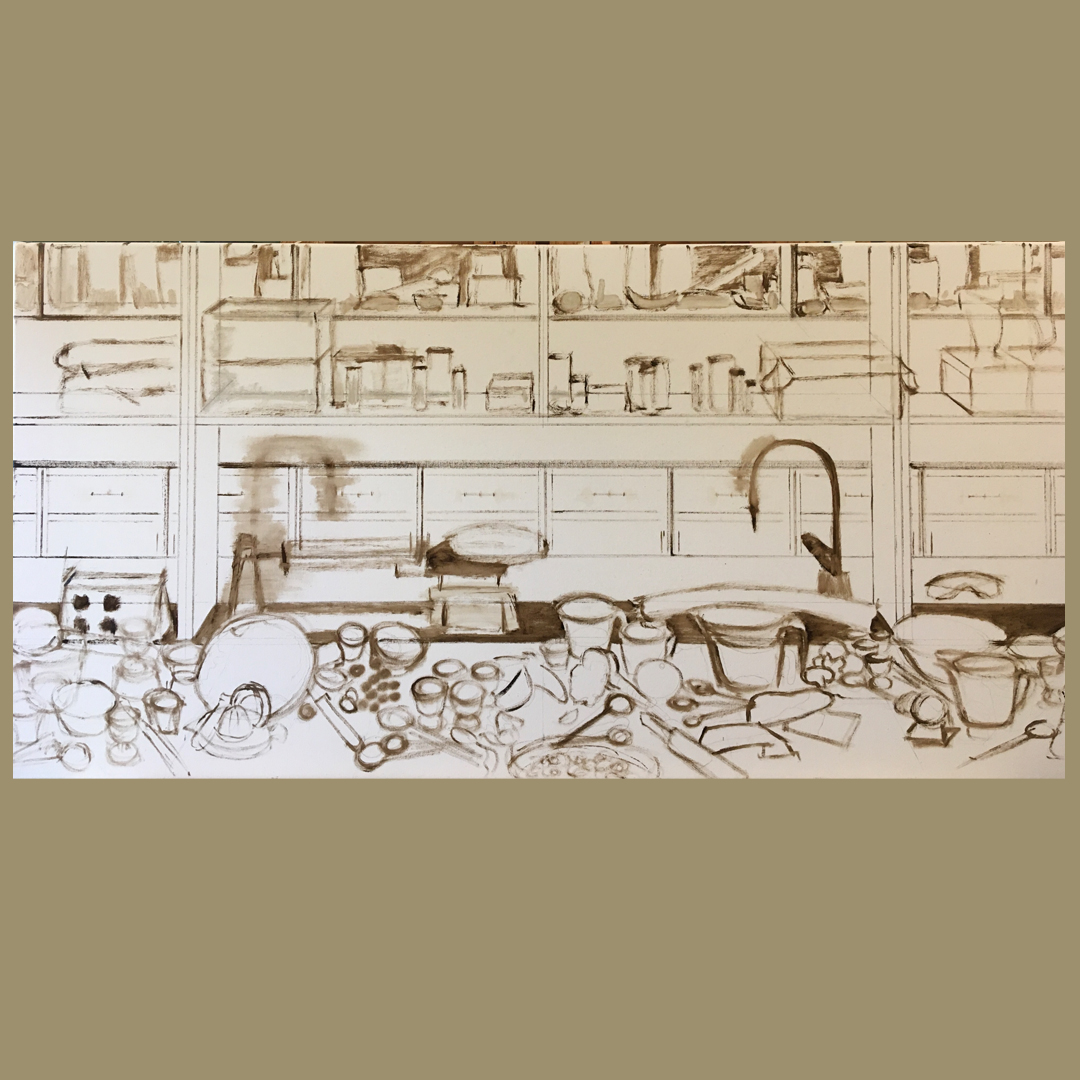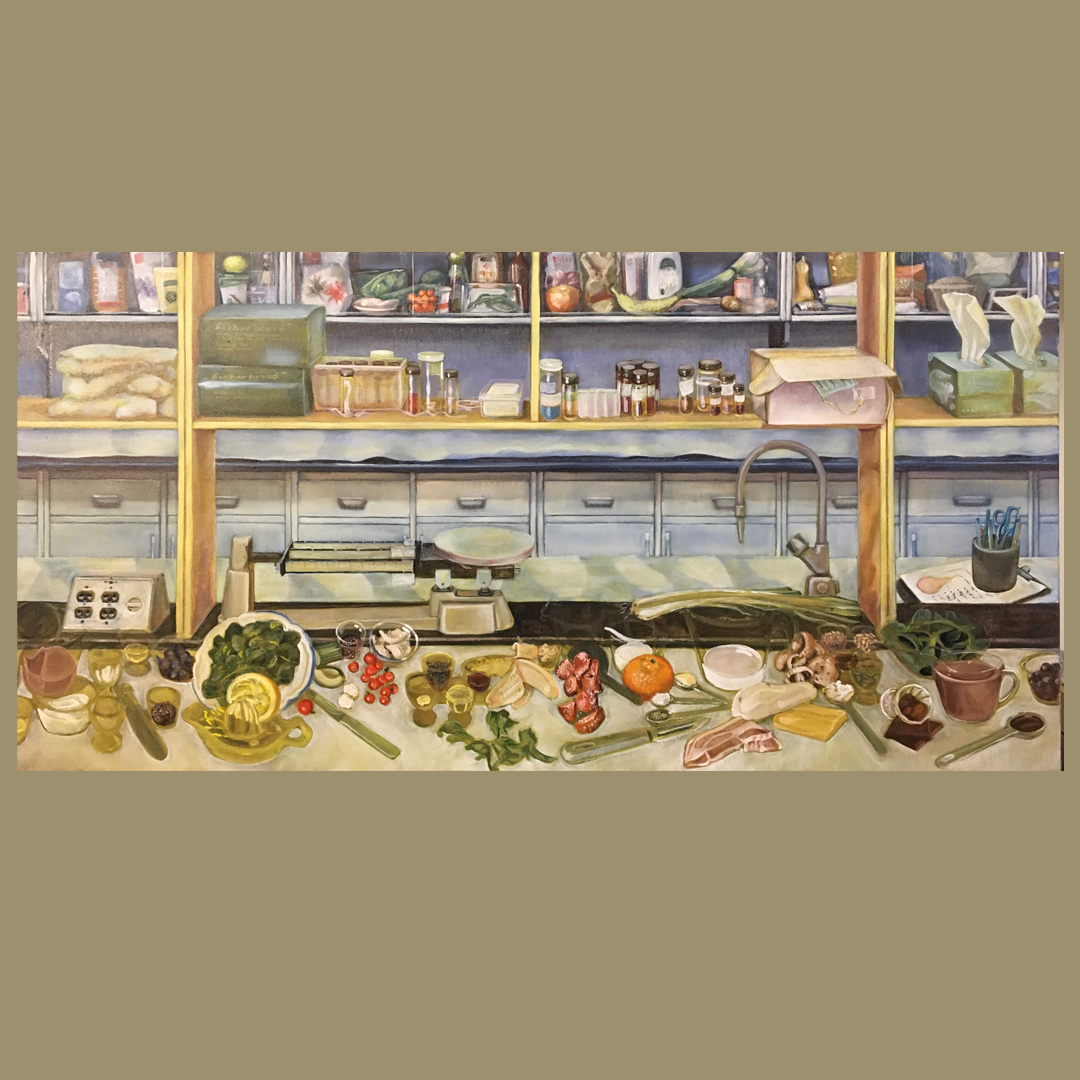
Welcome to the seventh instalment of a series of blog posts going more in-depth into the thoughts and ideas behind each of the paintings in the Earthly Delights series. The series is based on my experience navigating health and diet culture as a long term participant. You can read the full background by following the link to that blog post below:
Project Background: You can read more about the project background here.
Following from my last post about DRI – Return on Investment, DRI – Getting The Most From The Least shows the ingredients from the former painting in the process of becoming the meals for one person, for one day in the previously mentioned healthy eating plan.
In the last post I wrote about the financial investment that health and diet culture encourages people to believe is necessary to achieve the holy grail of good health and a slim physique that matches our culture’s expectation for what good health looks like.
In this painting I wanted to talk about another form of privilege in health and diet culture. The privilege of time.
I chose to set this painting in a laboratory setting (Thanks to Professor Jalilehvand at the University of Calgary for sending me images of the BioXAS Laboratory to use as reference for this painting) to highlight the near scientific level time, precision, dedication and attention it takes to meticulously weigh, measure and prepare perfectly balanced nutritious low calorie meals from many popular healthy diet plans on a consistent basis.
Not only does one require the wealth to afford the food, but also the wealth to afford someone time and mental space to dedicate to food preparation. This is not a ham sandwich on whole wheat with a handful of baby carrots and a piece of fruit. We are talking complete control of ingredients for every meal and snack, including home made vinaigrettes, salads with grilled chicken or cooked grains, smoothies, healthy chocolate drinks, potato and leek soup, and lemon zest for the chia pudding with a cooked blueberry sauce, all on a week day. Can it be done for a working family? Sure. But can it be done consistently? Probably not without incredible organizational skills and a willingness to give up a lot of other things. Add the second healthy lifestyle component to that schedule, exercise, and there isn’t much time for working parents to attend to anything past the necessities of life.
In my own experience I had my biggest weight loss progress when I inadvertently ended up with a part time schedule. The unexpected silver lining to the situation was the additional time for exercise and food preparation. However for anyone earning less than an upper middle class income the accompanying economic stress, including dealing with periodic food insecurity, will be enough to deter them from cutting back working hours. I think you would be hard pressed to find a popular health and diet plan that would advocate you cut the income that is paying for the plan in order to make that plan achievable.
However, add a level of wealth to the mix and one can afford to hire food preparation done, or afford one parent to devote all or part of their time to the health of the family.
While health and diet culture may be primarily advertising to the wealthy and the upper middle class, who have the money to pay for books, trainers, special foods, or free time, it’s not like the lower middle and working class are deaf to the message. For anyone who relies on their ability to exchange their hours for dollars the competitive advantage of health, stamina and slimness in an image obsessed culture resound strongly. Add a good dose of parental guilt to the mix and it seems like one absolutely must spend as much time as the books recommend weighing, measuring, counting and preparing meals.
Time seems to be the most limited commodity in the majority of working Canadian households. This being so, I wonder if pouring those precious remaining hours into obsessively counting calories, macro’s, grams and points into expensive health and diet programs is the best use for them? What else might one be able to do to improve ones life with that time and money?










